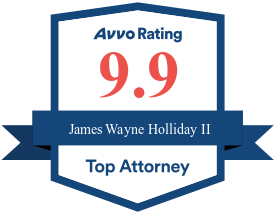In Florida, if you sustain a work-related injury, you have two years to file a workers’ compensation claim from the date of the accident. If your employer doesn’t have a workers’ comp insurance policy, you may sue the employer. You may also be able to file a lawsuit against third parties who are liable for slip and fall accidents. If you want to file a personal injury lawsuit, you will have four years from the accident before the statute of limitations passes. For more information, reach out to a Florida slip and fall lawyer.
Although two to four years may seem like plenty of time to file, that time can quickly pass. If you fail to file a claim or lawsuit before the statute expires, you may be unable to recover any compensation for your injuries. Instead, it’s best to file as soon as possible to increase your chances of succeeding and get started with the claims or litigation process.
Filing a Lawsuit Against a Liable Third Party
As mentioned, you may have the chance to sue a third party if a particular person or entity was behind your accident outside of your employer. In these instances, you would file a personal injury lawsuit that enables you to seek non-economic damages such as pain and suffering in addition to economic damages. Some examples of cases involving third parties could include:
Injuries Involving Toxic Substances
Employees may spend time around toxic substances in the workplace. If they suffer an injury because of this substance, they may be able to file a lawsuit against the product manufacturer. For instance, a toxic substance may cause a serious burn injury when a worker slips and falls on it, in which case the manufacturer could be liable under certain circumstances.
Injuries Involving Contractors or Subcontractors
You may also be able to file a lawsuit against third-party contractors or subcontractors whose negligence led to a slip and fall accident.
Injuries Involving Defective Products
Manufacturers of defective products could also be liable for slip and fall accidents if their products contributed to them. For example, a construction worker operating a defective tool could wind up slipping and falling from a height if the equipment unexpectedly malfunctions.
An experienced and knowledgeable slip and fall attorney may help you identify any liable third parties. They may then begin working on a case and collect evidence to show how the third party was negligent or engaging in other types of improper conduct.
Common Causes of Slips, Trips, and Falls in the Workplace
Slips and falls are among the most common types of work-related accidents. Many potential hazards can cause them and lead to minor to serious injuries.
Some of the most common causes of these types of accidents include:
Inadequate Maintenance
Failing to properly clean and maintain facilities often leads to slip, trip, and fall accidents. This could entail failing to clean floors regularly, maintaining flooring or other parts of the property, or removing potentially dangerous objects from locations where they could cause a slip and fall.
This cause is often preventable and could indicate that negligence was behind a work-related accident.
Slippery Floors
When polishing the floors, tiles can become slippery to the point where they can cause workers to slip and fall. This is especially hazardous with tiles located in places where many people walk, such as in front of entrances or the middle of corridors. Wetness or certain types of footwear could further increase the risk of slip and fall incidents.
Wet Floors
In addition to slippery flooring, wet floors could cause slips. Floors often become wet when cleaning them, in which case there should be signage indicating that the floor is wet. Other potential causes of wet floors include bringing in water from outside, leaking ceilings, and spills.
Dusty Floors
Dust may also gather on floors and cause people to slip. Dust could build up from certain tasks that generate it or from a lack of cleaning over time.
Uneven Flooring
People could trip on the flooring if it’s uneven. Specifically, cracks, potholes, and uneven pavement could lead people to trip. This is why occasional maintenance and proper floor installation are necessary for the workplace.
Loose Flooring
Loose floor tiles, mats, or floor coverings could cause people to slip, trip, and fall. For example, a mat could slide out from under people’s feet if it’s not secure, uneven rugs that don’t lie flat could cause a trip, or temporary floor coverings could slide and cause a fall.
Icy Surfaces
In certain facilities with cold environments or outdoor settings, ice can be a big risk. Ice makes flooring and other surfaces slippery, potentially causing slips. In these work environments, it’s important to eliminate ice buildup when possible to minimize the risk of slips and falls.
Obstacles
Various obstacles might sit in the way of people and increase the risk of a trip and fall accident. For example, tools could sit in pathways, or packaging might temporarily sit in a hallway. Waste generated from a work task may also lead to a trip.
Obstructions
Unlike obstacles, obstructions are permanently stuck in place, but they can also cause trips and falls. These hazards could include everything from steps on stairs that people trip on to low walls.
Dim Lighting
If areas of a facility aren’t lit properly, poor lighting conditions could cause a trip and fall. Not only could people trip on certain fixed objects that normally aren’t hazardous, but they may also be unable to see and remove preventable hazards. All workplaces should have plenty of lighting. Even if workers can’t see in an area because of a lack of fixed lighting, they should have the equipment needed to increase visibility, such as flashlights and headlamps.
Cables
Loose and trailing cables may get in the way and cause workers to trip over them. Employers and employees should reduce this risk by organizing cables and putting them away as needed.
Adverse Weather Conditions
While ice is one of the biggest hazards when it comes to weather conditions, snow, rain, and wind could also create unstable conditions that put people at risk of slipping and falling. In these conditions, workers should have access to the proper gear that protects them and minimizes the risk of an accident.
Malfunctioning Equipment
Certain types of equipment could also contribute to a slip-and-fall accident if it doesn’t work properly. Equipment such as heavy machinery and tools should undergo necessary maintenance to make them safer to use and more reliable.
What Steps Should You Take After a Slip and Fall at Work?
If you are in a slip-and-fall accident at work, there are steps you should take to increase your chances of succeeding with a workers’ comp claim or lawsuit. These steps include the following:
Report the Injury
If you don’t require immediate treatment, you should report your injury and the accident to your employer as soon as possible. Your employer should be able to provide you with the necessary forms to file a work injury report, which may help support a workers’ comp claim.
Seek Treatment
To begin the recovery process and generate medical records that can further help your case, seek treatment from medical professionals. You may need to see a doctor under your employer’s workers’ comp insurance policy, but you can also seek an independent examination and assessment.
When speaking with the doctor, be honest about the nature of the accident and your injuries.
Consult a Personal Injury Attorney
Even if your case seems relatively simple, you might be able to recover more workers’ compensation than you initially believe. To ensure you get the best chance to recover full compensation, consider reaching out to an attorney with experience handling slip and falls and workers’ comp cases.
While workers’ compensation will cover certain economic damages, such as medical bills and lost wages, it won’t cover non-economic damages even if you qualify. As such, your employer and the workers’ comp insurance company may attempt to prevent you from seeking non-economic damages by getting you to sign a workers’ comp agreement. An attorney can help prevent this and ensure you can seek the compensation you deserve.
File a Claim as Soon as Possible
To avoid passing the statute of limitations and compromising your case, you should file a workers’ comp claim as soon as possible after a slip and fall accident. This expediency will help get the claims process going and get you compensation sooner before your medical bills accumulate.
Collect Evidence to Support Your Workers’ Comp Claim
To increase your chances of getting total compensation for your injuries, you should collect sufficient evidence to support your claim. Remember that insurance companies want to avoid paying out large amounts of money, which is why they’ll work to find any reason to diminish your case or reject your claim entirely. With enough evidence to help you, insurance companies won’t be able to reduce your settlement or deny your claim as easily.
Some of the evidence you can gather and organize to build a case will include:
- Medical records, bills, and receipts
- Prescription records
- Work injury reports from employers
- Income tax forms
- Photos of the scene of the accident and any injuries sustained
If you can get all of this evidence, an attorney can collect it and use it to build a successful case.
How Much Compensation Can You Recover for a Work-Related Slip and Fall?
Multiple factors can influence the compensation you get for a slip and fall at work.
For instance, the total amount of compensation will depend on the severity of your injuries, the amount your employer paid you before the injury, and the amount of time required to recover while out of work.
Workers’ compensation cases can vary greatly and lead to many outcomes. An experienced attorney with experience in this practice area will be able to help estimate how much your case is worth.
If your injury is more serious and negligence or wrongdoing was behind the inciting incident, you might be able to recover a large settlement.
Consult a Reputable Slip and Fall Injury Attorney
In the event of a work-related slip and fall accident or another type of workplace incident, you may be able to file a workers’ comp claim or a personal injury lawsuit to recover compensation. Contact an experienced attorney to discuss your case and inform you of your rights and options. By taking the right steps after a slip and fall accident at work, you may have the chance to get full compensation from employers and other parties. For more information reach out to a Florida personal injury lawyer.










